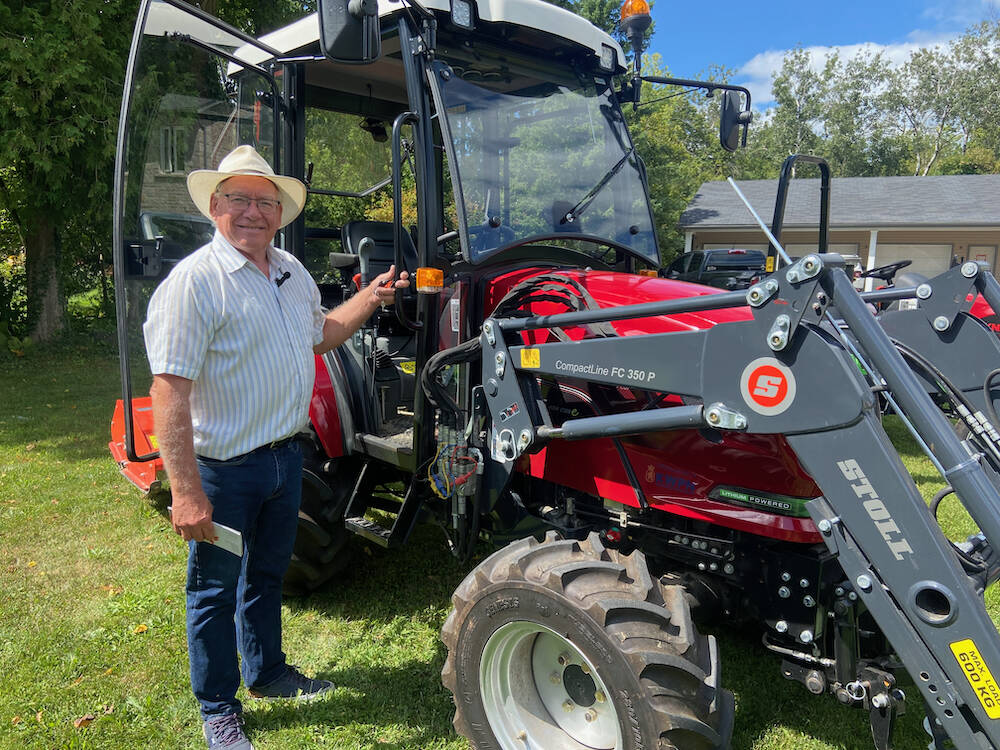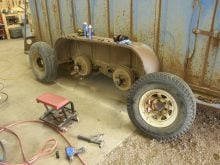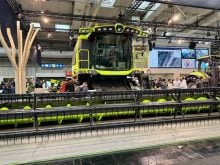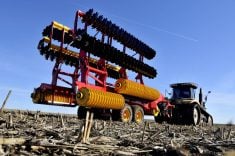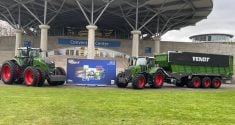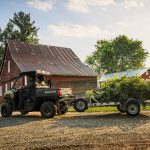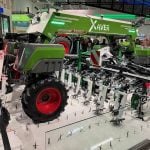A new electric tractor is available in North America aimed at horticulture, greenhouse and livestock operations where noise and diesel fumes are an issue.
Knegt, a Dutch company, makes diesel utility tractors and uses the same base for an electric retrofit, says Marty Philippi, president of MAP Agri, an importing and exporting company based in Cambridge, Ont.
“It’s a fairly standard tractor, not a lot of mechanics or computers to it. There’s no computer other than the battery management system,” said Philippi, during a visit to look at and drive the tractors near Glen Morris, Ont.
Read Also
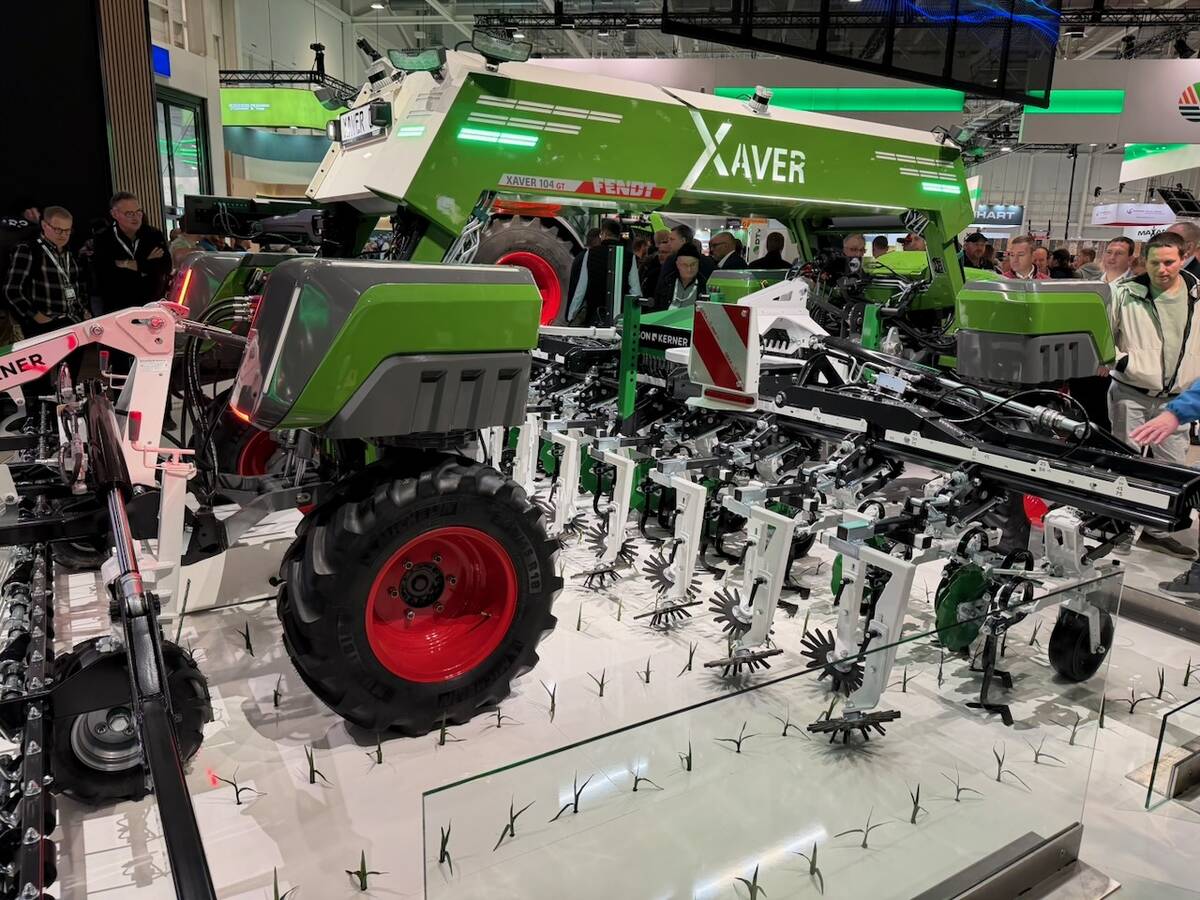
Agritechnica: Robots and more robots, Nexat loves Canada and the trouble with tariffs
Agritechnica Day 4: Robots and more robots, Nexat loves Canada and the trouble with tariffs.
The Knegt tractors are narrow and simple machines with traditional shift levers and no hydrostatics, so engaging the clutch is required for all shifting. There is no forward-reverse shuttle. However, it is easy and intuitive to operate for anyone used to driving a tractor.
The four-wheel-drive machines dedicate a certain amount of horsepower to the drive train and a certain amount to the hydraulic system. So, the 55-hp version includes 40 hp dedicated to the engine drive system and 15 to the hydraulics. The tractor is available in 45-, 55- and soon 65-hp models.
The absence of engine noise brings more attention to other sounds, including the hydraulics and drive train.
Otherwise, it drives and performs much like a fuel-powered tractor. The only difference is the immediate torque, for both the drive train and attachments.
The tractors are available as open station, with a cab or a half cab, and a Stoll loader is also an option. It has a standard three-point hitch.
There’s an option to include a front three-point-hitch linkage system, and there’s motivation to include that option when it comes to battery management. An optional external battery, carried on the front hitch, can provide enough extra life for about nine hours of hard work, such as running a tiller.
The tractor battery lasts for about three hours of hard work, or up to six hours of less strenuous work, says Philippi.
An operator can start the day with the onboard and external battery charged. When the external battery power is used up, it can be offloaded to charge, and can achieve about 80 per cent charge in three hours (with the top-speed charging system). In three hours, the on-board battery will get low, so the external battery can again be loaded and used for another couple of hours.
The tractor has to be relatively close to a charger to get a long day’s work, but smaller tractors aren’t meant to be doing row-crop operations at around 50 hp.
Batteries are expected to last for 10 years or about 3,500 charges. The tractor can be charged overnight on 110 V power, in about six hours with 220 V and if a farm has access to three-phase power, it can be charged to 80 per cent in about three hours.
There are areas where it fits well, Philippi says, including barns where a farmer wants a quieter tractor without emissions. Horse-riding arenas are one example. Greenhouses also make sense because the operator can have a fully functioning tractor without concern for diesel particulate around crops and workers.
Vineyards, market gardeners and municipalities have also shown interest.
Philippi has dealers in British Columbia and Alberta and expects to have another soon in California. He’s looking for more.
With MAP Agri, he has done a lot of work exporting Jaylor mixers around the world. Electric tractors are a new product for the company and he believes there’s a market.
Soletrac and Monarch, two electric tractor makers in North America, have now sold hundreds of units each.
“We think the EV market for tractors is ready to go,” he says.




